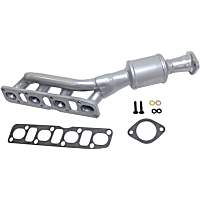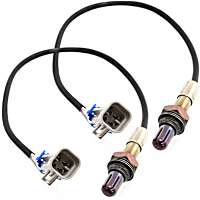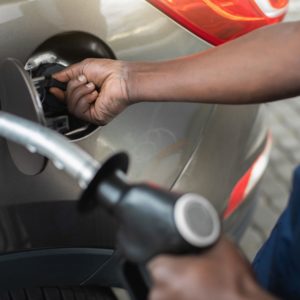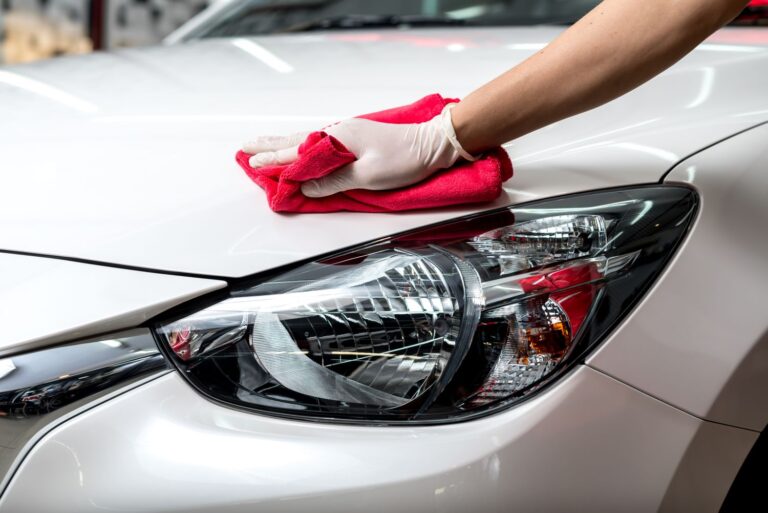Your vehicle starts belching smoke. Its engine might stall, lose power, and idle roughly. Finally, the check engine light switches on. When you plug the OBD-II (on-board diagnostics 2) scanner into the connector, it shows the trouble code P0430.
What Does the P0430 Code Mean?
P0430 is a diagnostic trouble code (DTC) for “Catalyst System Efficiency Below Threshold (Bank 2).” It warns about a problem with the catalytic converter mounted near engine bank 2 (the side of the engine opposite the number one cylinder).

A failing catalytic converter breaks down less pollutants in the exhaust, resulting in lower oxygen (O2) levels overall. The downstream oxygen sensor detects the change and informs the vehicle’s computer. In turn, the computer activates the check engine light and logs the appropriate OBD-II trouble code for diagnosis by a trained mechanic.
In most cases, a vehicle with an inefficient catalytic converter will continue to run just fine. But if the converter is obstructed internally, it can cause poor engine performance and may even damage the engine in the long run.
Both scenarios can result in higher levels of pollution that may violate state and federal limits on vehicle emissions, although many states do not require emissions testing.
If the OBD-II code reader displays a P0420 or P0430 trouble code, bring your vehicle to an auto repair shop for a thorough checkup and repair job.
How the Catalytic Converter Works
The catalytic converter is an exhaust-mounted emissions control device. When working properly, it transforms pollutants created by the engine into harmless water vapor and carbon dioxide.
The three enemy gasses the emissions system targets are:
- NOx (nitrogen oxides)
- HC (hydrocarbons or unburned fuel)
- CO (carbon monoxide, which is an invisible, odorless, and deadly poison in a closed space)
A “catalyst” changes other things without undergoing change itself. Today’s vehicles have what is known as a “three-way catalyst” that handles all three of the harmful gasses.

As for the P0430/420 codes, it’s important to note that these codes only point to a problem with the light-off converter that is mounted closest to the engine. The rear converter isn’t monitored by the OBD-II system. Some converters have both “bricks” in one shell with the oxygen sensor screwed right into the middle of the converter between the two bricks.
As for the P0430/420 codes, it’s important to note that these codes only point to a problem with the light-off converter that is mounted closest to the engine.
–Richard McCuistian, ASE Certified Master Automobile Technician
The light-off converter nearest the engine handles NOx emissions (a product of hot combustion), while the one farthest from the engine handles HC and CO (from too-rich mixtures). An engine with a healthy catalyst system will produce CO2 and water vapor at the exhaust.
Remember, normal combustion creates water vapor, and that’s why all that steam comes from the exhaust until the exhaust system warms up when you start a vehicle in cold weather. An engine typically produces a gallon of water for every gallon of fuel consumed. Is this a problem? Not at all. Neither is CO2. The grass loves CO2, which is one of the reasons roadsides need so much mowing. CO2 feeds plants and trees exactly what they need.
But since 1996, OBD-II regulations have required the PCM (the vehicle’s engine computer) to keep track of the catalytic converter’s performance by monitoring the downstream oxygen sensor, which is referred to as such because it’s located behind the catalytic converter.
If you’re advanced enough to watch live data on a scan tool or with your smartphone app talking to a dongle connected to the DLC connector on a healthy engine, you’ll see the upstream O2 sensor the computer uses to balance the air/fuel mixture switching rapidly (several times per second). You’ll also see the downstream corresponding O2 sensor switching much slower.
That’s the way it’s supposed to be. When the downstream sensor begins to switch at the same rate as the upstream sensor, the P0420/P0430 codes are stored by the PCM to flag the failure of the catalyst to store oxygen.
P0430 vs. P0420
The P0430 code’s mirror image is P0420, which applies to the converter on bank 1. As was mentioned, bank 1 and bank 2 simply refer to the different sides of the engine. It’s also worth noting that engines with an inline or straight cylinder configuration only have one bank, although some inline six-cylinder engines will have two “banks” and two cats with four O2 sensors. Jeep 4.0L inline six-cylinder engines tend to be configured this way.
While the OBD-II scanner can distinguish between a P0420 code and a P0430, it never hurts to double-check for issues that may cause a problem with the catalytic converter. There can be different causes for vehicles like a BMW with code P0420 and P0430.
What are the Possible Causes of the P0430 Code?

A faulty catalytic converter is the most frequent cause of a P0430 trouble code. Common issues that can cause this OBD-II code include:
- Faulty catalytic converter.
- Damaged or failing O2 sensor that gets incorrect readings of emission levels.
- Broken or improperly connected wiring for the downstream O2 sensor.
- Upstream and downstream O2 sensors reporting very similar O2 level readings. It’s important to note that if the upstream O2 sensor becomes unreliable and the PCM detects it, the downstream O2 sensor becomes the primary fuel feedback signal. Many mechanics don’t know this, but the PCM’s programming is all about keeping the catalytic converter happy. That’s how important the converter is.
- An upstream leak in the exhaust system, such as a crack in the exhaust manifold or a loose header pipe at the manifold that allows air to enter and confuse the upstream sensor.
- Faulty fuel injectors.
- Computer issues (e.g., software in need of an update).
- Engine isn’t heating up enough.
There are also several problems that can cause the catalytic converter to fail in the first place. Engine performance issues, such as a misfire or improper air/fuel ratio, can cause the converter to overheat due to raw fuel passing through the converter. This can make the converter glow cherry red in extreme circumstances.
The converter can also be damaged by contaminants (e.g., coolant and engine oil).
What are the Common Symptoms of the P0430 Code?
You may notice the following symptoms if you drive a vehicle with a P0430 trouble code:
- An illuminated or flashing check engine light
- A failed emissions test
- A rotten egg or sulfur smell
Often, code P0430 indicates a converter that’s worn out or degraded, rather than obstructed internally. But if the converter is blocked or clogged, that can lead to engine performance problems, such as lack of power, rough idle, and stalling.
How to Diagnose the P0430 Code
There are numerous potential causes for the OBD-II code P0430. As such, diagnosis can be difficult. For an idea of how to troubleshoot the code, check out the video below:
How to Fix the P0430 Code
There are multiple reasons why code P0430 might be stored. Therefore, there isn’t a magic bullet fix for the issue. You’ll need to diagnose the code accurately, as outlined above, then perform any necessary repairs.
The code could be triggered by parts like a bad catalytic converter, a faulty oxygen sensor, or a damaged wiring harness and connectors, so you must do your homework. If your scan tool is still showing p0420 and p0430 codes after replacing the catalytic converter, then a bad oxygen sensor might be the problem, instead of a bad catalytic converter.
Also, keep in mind that all vehicles are different. When troubleshooting and repairing DTCs, you should consult the factory repair information for your application.
Repair manuals, such as those from Chilton, are useful, but an ALLDATA subscription is even better. ALLDATA has single-vehicle subscriptions for DIYers that provide detailed factory repair information.
Other Notes About P0430
Since it is a generic powertrain code, the P0430 trouble code applies to most makes and models of vehicles manufactured from 1996 onward. The exact repair method may vary according to the type of vehicle, but in general, the fix for a P0430 on a Ford will be pretty much the same as the fix for a Chevy or Nissan. This fix might also work for a P0430 on a Lexus GS300, a P0430 on a Toyota 4Runner, or a Honda Odyssey P0430.
Many car owners make the mistake of immediately attributing a P0430 trouble code to the oxygen sensors and replacing the devices without checking for other possible causes. Since the problem will usually be the catalytic converter, another part of the exhaust system, or even the engine, simply replacing the O2 sensors is a waste of time and money.
Vehicle owners with extensive DIY auto repair can fix most issues that cause a P0430 trouble code. However, the safest approach is to bring the vehicle to an auto repair shop for diagnosis and repair.
Where To Buy Parts for the P0430 Code
If you’re looking to buy a new catalytic converter, O2 sensors, or other parts you need to resolve the P0430 trouble code, order now from CarParts.com! With our wide selection of aftermarket brands, you’re sure to find the part you need without breaking the bank.
Placing an order with us takes only a few clicks on our easy-to-navigate website. You don’t even need to leave the comforts of home to make your purchase. And if you aren’t sure what parts to buy, just ask our friendly, round-the-clock customer support.
We also offer a convenient and secure check-out and accept all major credit and debit cards, PayPal, and Visa Checkout for payment. Don’t hesitate. Place your order today!
Products Mentioned in this Guide
Shop this Project



Any information provided on this Website is for informational purposes only and is not intended to replace consultation with a professional mechanic. The accuracy and timeliness of the information may change from the time of publication.



 Catalytic Converter
Catalytic Converter
 Oxygen Sensor
Oxygen Sensor
 Exhaust Manifold
Exhaust Manifold




















Hello,
I just bought a 2005 Honda Pilot with 160,000 miles on it.
It just gave me the P0430 O2 Bank Two Downstream (not officiant or however it stated it).
The car was running fine until the light came on. We have only driven it for 100 miles since purchased. The previous owner either lied (I suspect this to be the case) or didn’t know the problem existed.
The car started hard but runs just fine. It was running and starting just fine until the light came on. There is no smell consistent with the Cat. Could it just be the sensor? I did wash under the hood with an engine degreaser as a power steering hose needed to be replaced.
Any thoughts? It has an appointment at the shop for some vent work (actuator motor/door).
Hello,
Unfortunately, the most common cause of a P0430 code is a faulty catalytic converter (also, there usually isn’t a smell associated with a failed cat). That being said, a faulty O2 sensor or another less costly problem isn’t out of the question. We recommend getting a professional, in-person diagnosis for a definitive answer.
You bought an old car and it comes with hidden and waiting to show up problems.
They show up suddenly on the dashboard with engine light on. ( no one will expect it, it’s a natural instinct to blame the prior owner knowledge, but it’s not and u just have to deal with it).
I have 2012 pilot and had hell of expenses since it crossed 160 k mileage. The expenses are more than the value of vehicle but I still like it more than my ex. The engine light turns on and – I have to change complete transmission and torque converter. Later engine mounts break and needs to be changed.
6 months later, engine light on again, catalytic converter is problem and it needs replacement.
Welcome to old age, things breaks apart frequently. Keep fixing them until u can afford or get a new one.
Hope this helps !!!
you need to run a smoke test to eliminate air leaks before you change any parts.
I have a 15 camaro with a p0430 can’t seem to find the issue any one that might be able to help
Hi Rick
The code is usually set by a faulty bank two catalytic converter, but as this article points out, there are other possibilities, as well. We recommend having a professional diagnose your vehicle in person for a definitive answer.